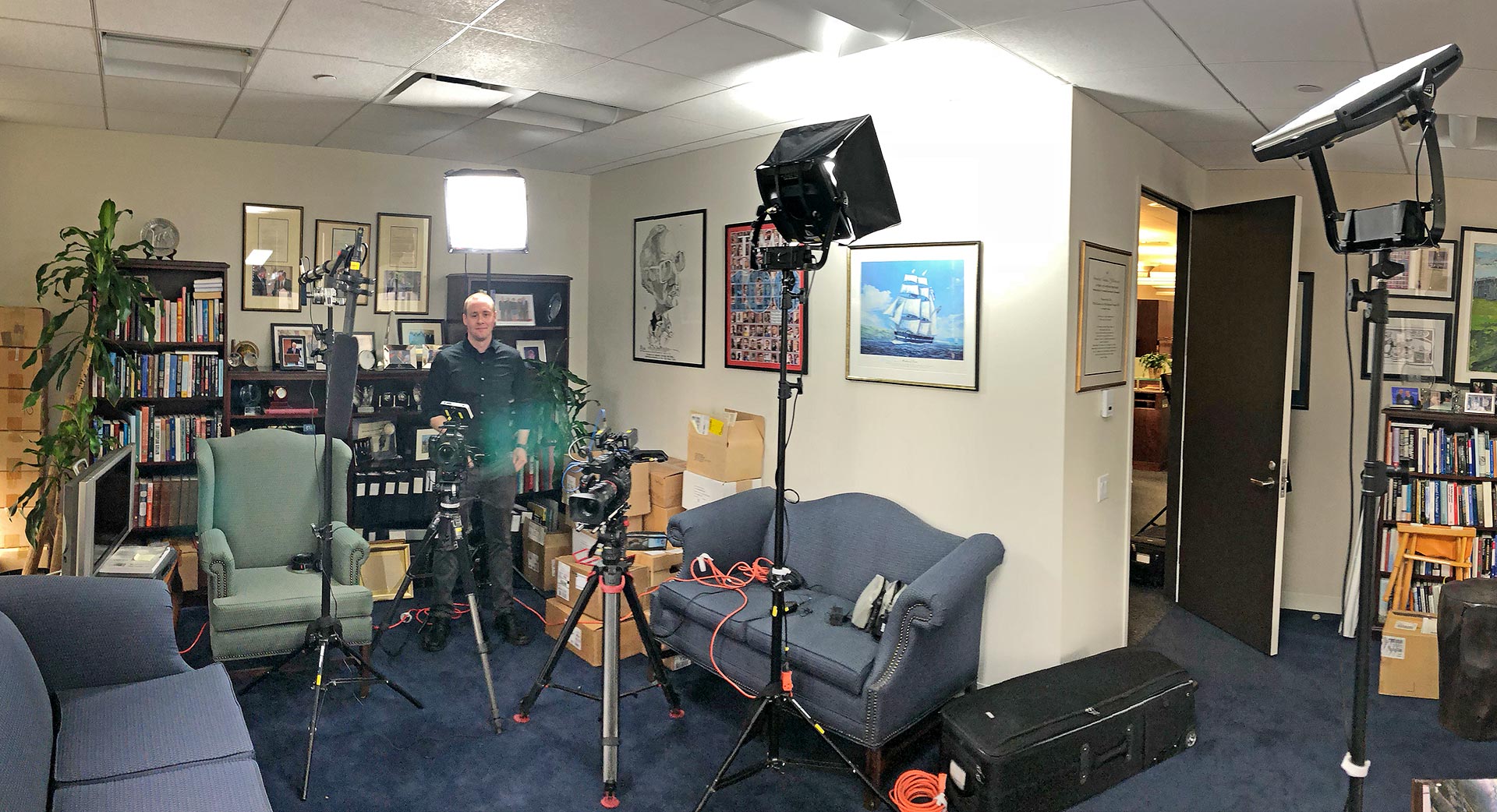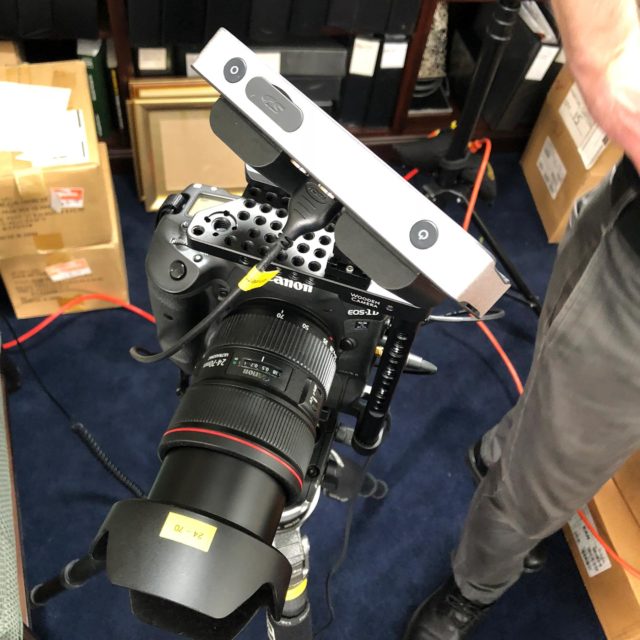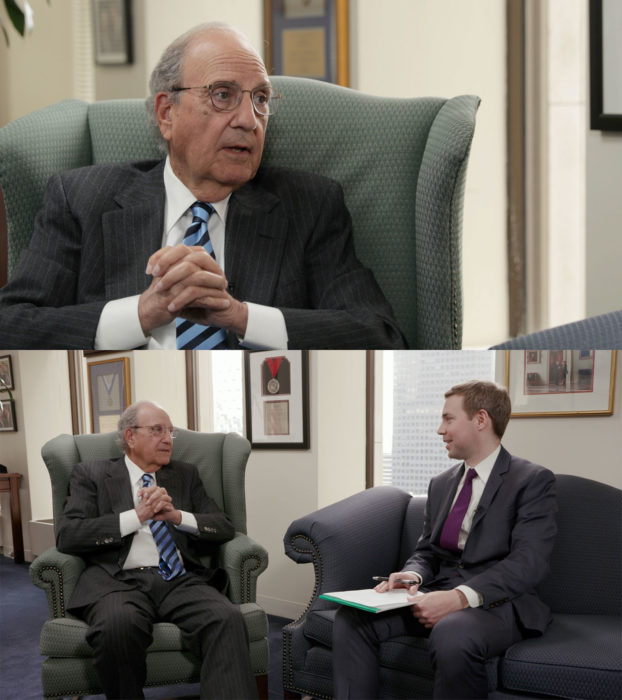I had the honor recently of filming an interview with Senator George Mitchell at his office in New York City.
A man of many accomplishments and titles. Senator Mitchell is a GBE but in the lead up to that he was a United States Senator representing Maine (1980 – 1995) including being Senate Majority Leader for six of those years, United States Special Envoy for Northern Ireland (1995 – 2001); Chancellor of the Queen’s University, Belfast (1999 – 2009); Vice-Chair of the 9/11 Commission and United States Special Envoy for Middle East Peace (2009 – 2011).
Senator Mitchell was interviewed by Fordham Law School Adjunct Professor John Rogan on his role in brokering the Good Friday Agreement (1998) which was integral in bringing an end to thirty years of sectarian violence in Northern Ireland.
Senator George Mitchell on the 20th Anniversary of the Good Friday Agreement on Vimeo and on YouTube.
As an assignment this project had to have a small footprint and be nimble enough to adapt to whatever the location presented. Setup time was about thirty minutes including moving some furniture and boxes, setting up the two cameras, the lights, and prepping the audio.
Normally, a two person interview where both the interviewer and the interviewee are on camera would be filmed with three cameras. A two-shot and then tighter shots of each person but various constraints dictated that this project be two cameras. Since Senator Mitchell was the principle subject, the A-camera would get both him and John Rogan, and the B-camera would concentrate on a head shot of Senator Mitchell. Filming was done in 4K to allow for punching in from the two-shot to either subject (should it be needed) and to allow for reframing in post.
Upon seeing the office it was immediately apparent that the chair and the couch along the outer wall offered the best blocking for the subjects. It allowed for a natural interchange and it took advantage of the windows which were providing an ambient backlight. Plus, this angle gives the viewer a sense of Senator Mitchell through the framed images and citations on the wall.

Lighting
For lighting I used three of my Litepanel Astras. Two in softboxes and one with a diffusion panel. The key, seen above on the left, was the only light directly pointed at the subjects. The other two lights, as seen, were bounced off the ceiling and/or one of the walls. This kept the feel relatively high-key and provided enough light to mix well with the daylight. It should be noted that I turned off the overhead room lights to let my lights do their thing and to help control the color temperatures on set.
Cameras
Camera A was my C300 Mark II with a CN-E 18-80mm T4.4 lens and Camera B was my 1DX Mark II with a 24-70mm f/2.8L II lens. Both set to 23.98 and a 180 degree shutter. The 18-80mm was at 29mm and wide open at f/4. It got the two-shot. The 24-70mm was at 70mm and wide open at f/2.8. I don’t recall if I needed a ND filter on either camera but the 1DX Mark II was set to ISO 160 and the C300 Mark II to ISO 800.


Audio
I did double audio to have a backup and to make it easier to sync everything in post. The first audio feeds were via lav mics on each subject. Those mics’ audio were sent by Rode Rodelink wireless transmitters to the C300 Mark II.
The second audio feed for both subjects was captured by a Rode NTG-2 shotgun mic boomed between Mitchell and Rogan which was hardwired into the 1DX Mark II. The 1DX Mark II does not have phantom power to power a microphone but the NTG-2 can be self-powered via an internal AA battery. So, that setup along with an XLR to mini-jack cable and the feed was good to go into the 1DX Mark II. This had the advantage of giving me much better audio on the 1DX Mark II than its internal microphone could ever provide and that’s also what helped ease the syncing in post in FCPX.
Color Matching
How do you color match the C300 Mark II and the 1DX Mark II? By dumbing down the C300 Mark II and having a custom picture profile for the 1DX Mark II. The C300 Mark II was set to Rec.709 which is also Canon’s Wide DR profile. The 1DX Mark II was set to a profile I built based on Neutral and 0, -2, -1, 0 for sharpness, contrast, saturation, and color tone but my profile bumps up the mids a bit and it raises the shadows to 30. This gives me a faux log on the 1DX Mark II so that I can have more control over the shadow detail.
Each camera was set to daylight color balance and I shot a WhiBal Gray Card on each to have a reference point.
The color in the video between the two cameras is not a 100% match but the feel between the two cameras is very close. It’s close enough that it works well in the video and neither camera’s image calls attention to itself.
You can see the differences in a side by side frame grab, as seen below. The chair color is slightly different, as is the blue in the tie and the color of the couch’s armrest. For this project, though, which was projected to a live audience and since then lives on the web, the match is great and works well.
Some of the color difference, it should be noted, lies not just in the cameras but in the lenses. The CN-E 18-80mm which was on the C300 Mark II is color matched to Canon’s cinema family of lenses. It runs a bit warmer than Canon’s L glass. The 1DX Mark II had L glass, the 24-70mm f/2.8 L II.

If you paid attention to politics and diplomacy in 80’s, 90’s and early 00’s you know Senator Mitchell. So, it was great to meet him and work on this project. Thanks to Chris Flanegan, pictured in the BTS panorama, for his help.